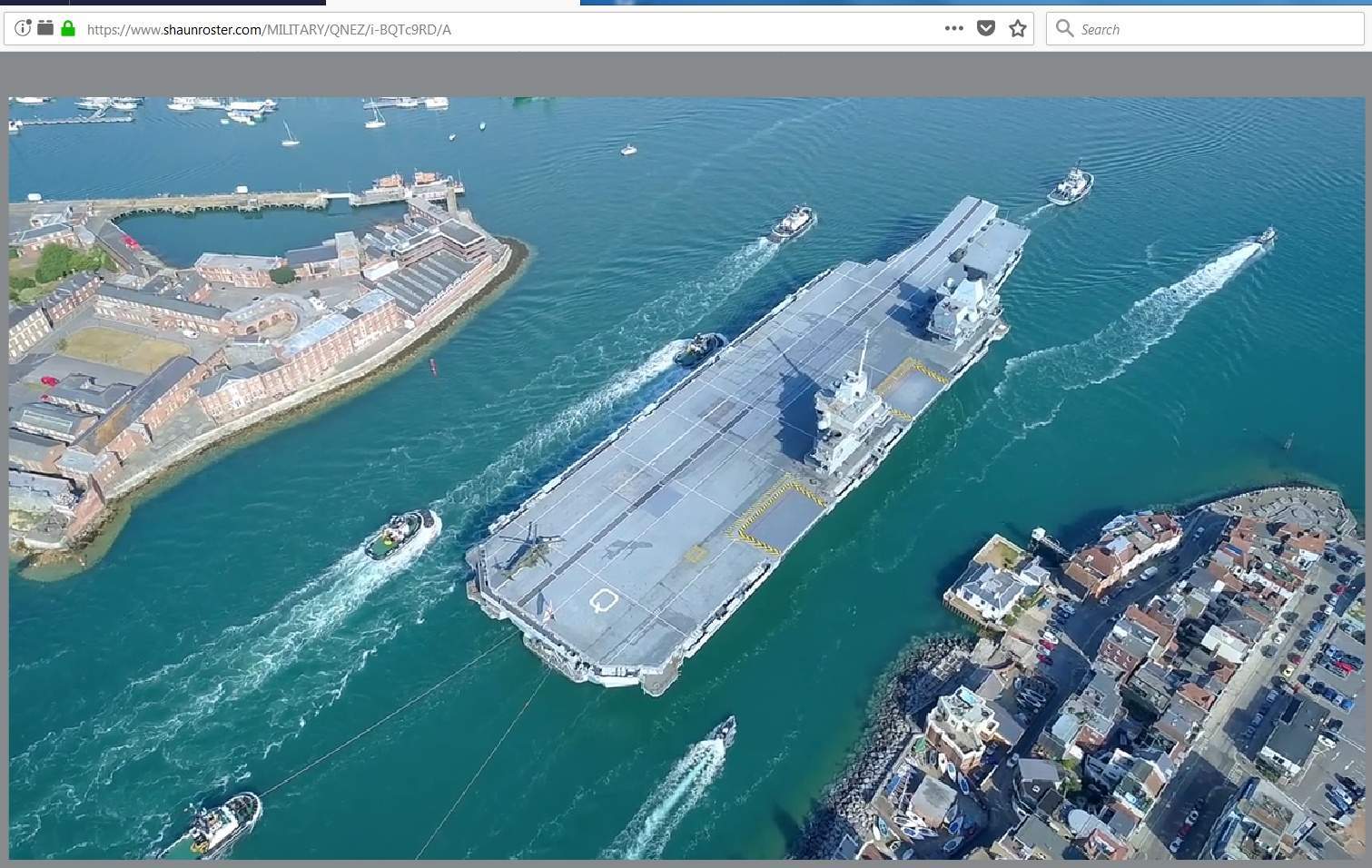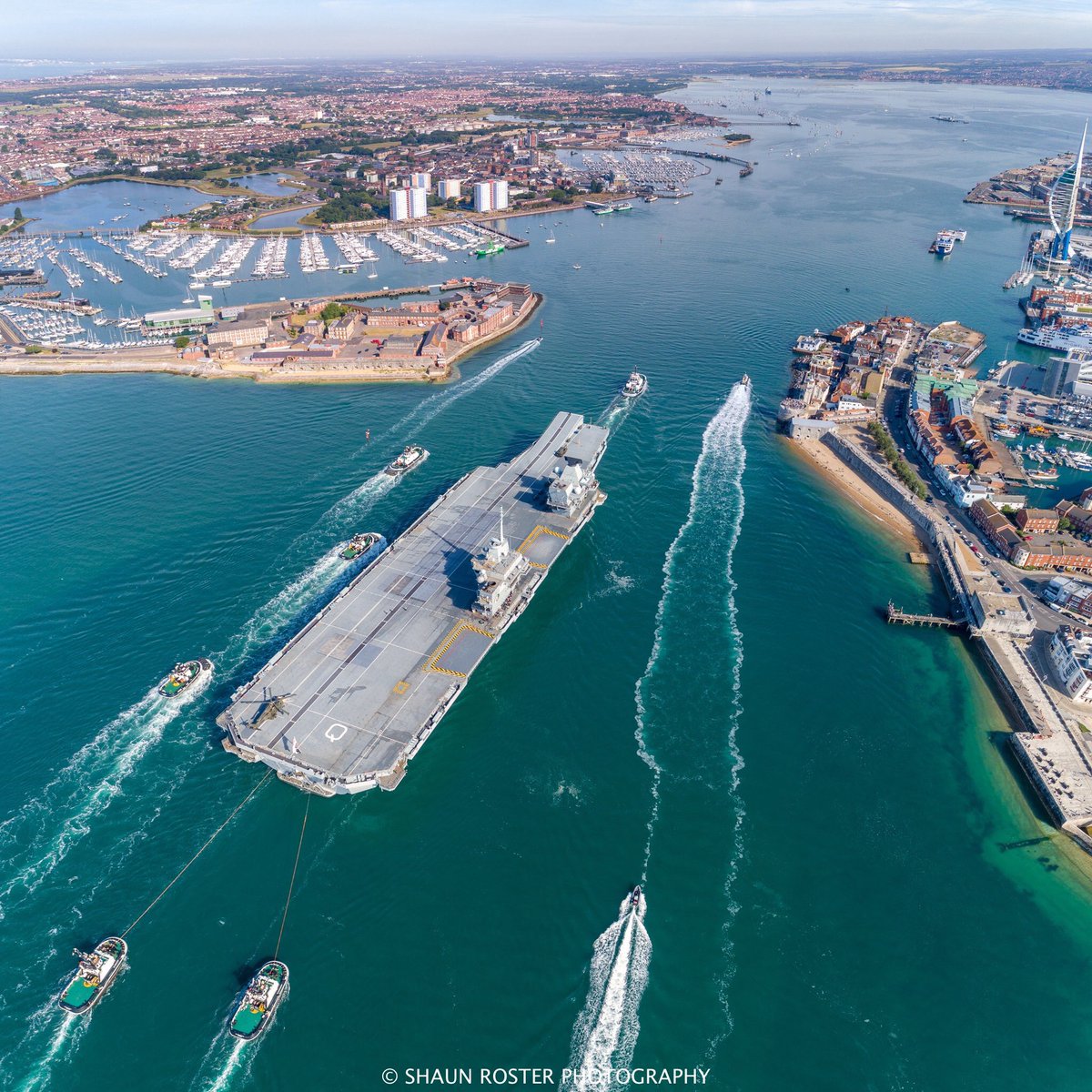timepass
Brigadier
it came out of nowhere - Incredible Rafale's carrier deck landing
Source French navy, March 2018...
Source French navy, March 2018...
Aircraft Carriers III Jul 22, 2017it's USNI News
NAVSEA: Carrier Gerald R. Ford Set to Start Sea Trials this Week
found the time now: "Ceremony will take place on Pier 11 at 10 am."
8:35 AM
Saturday, July 22, 2017 (EDT)
Time in Newport News, VA, USA
can't find a link to live streaming though ... got one ?
Well in my previous post the video shows a starboard side RAS as well. Generally the RN's Carriers 'shut down flying ops' whilst RAS-ing so they can devote manpower to stowing everything that comes aboard:Excellent find on the pix Obi Wan...
I served aboard five USN carriers and never saw a carrier do a port side RAS. Never. And I've seen only one photo/video of an USN CV doing a port side RAS.
USS America (CVA 66) circa 1967...





Latest pics of BNS Atlantico A140 (ex HMS Ocean) at Plymouth, shortly to depart for her new home of Rio:View attachment 47460 View attachment 47461 View attachment 47462



UK Military Times said:Merlin helicopters were the first aircraft to begin flying from HMS Queen Elizabeth and they will soon be followed by F-35 jets in Autumn this year.
Here at the UK Defence Journal we really point this out often but we’re getting closer and closer to ending the ‘carrier with no planes’ nonsense that appears all over social media so we’re happy to restate this once again.
HMS Queen Elizabeth is expected to start fixed-wing flight trials with three or more F-35Bs off the eastern coast of the US around September this year. A fantastic info-graphic created by SaveTheRoyalNavy can be found and details the timeline of the programme.
In order to prepare for operating from HMS Queen Elizabeth, Royal Navy sailors have also trained alongside their US Navy counterparts on the flight deck of the amphibious assault ship USS Wasp. Last year, the Royal Navy sent six Sailors to integrate into Wasp’s flight deck operations to prepare them for their upcoming Queen Elizabeth class aircraft carriers.
Royal Navy sailor Richard Clark said:
“Living with one another is good for integration, so when we work together, when we have your aircraft come to our flight decks, and vice versa, we’ll have a bit more awareness of how we each operate. It helps us work with you better on different platforms when we need to. This is the first group of guys who are not 1st Classes. Some of them have never been on a ship before, so for the younger guys, it’s good for them to get experience.”
Recent F-35 trials aboard the USS Wasp weren’t just an operational test for the United States Marine Corps, with much of the data produced being used to inform the USMC’s declaration of initial operating capability but also for the United Kingdom. UK personnel were fully embedded in the USS Wasp trials and will use the data gathered from this event, future trials and operational deployments to support the UK’s flying trials aboard HMS Queen Elizabeth off the US coast in Spring next year.
British F-35 pilots also recently embarked on the USS America for at-sea developmental testing phase 3 (known as DT), the last trial that paves the way for the US Marine Corps to deploy the jet operationally on amphibious assault ships. BAE Systems test pilot Pete Wilson said about the upcoming trials on the HMS Queen Elizabeth:
“This will not be a DT phase. Testing on the Queen Elizabeth will be like DTs 1, 2 and 3 combined. We don’t need to use fully instrumented aircraft; we already understand most of the loads on the aircraft systems, as we have tested that during earlier tests.”
HMS Prince of Wales will take over F-35 trials to allow HMS Queen Elizabeth to return to dock for her routine re-certification work.
Former Captain of the vessel Ian Groom told media that HMS Prince of Wales will need to be delivered during 2019 to allow flight trails to continue whilst Queen Elizabeth is undergoing inspection in dry dock. Quoted in Janes, Groom said:
“There is a further set of fixed-wing flying trials needed and HMS Prince of Wales has to carry them out. HMS Queen Elizabeth’s re-certification period in 2019 means we need HMS Prince of Wales then.”
What will the vessels carry when in operational service?
The term now used for the carriers embarked squadrons is ‘Carrier Air Wing’ (CVW). The vessels are capable of deploying a variety of aircraft in large numbers, up to a maximum in the upper fifties in surge conditions. Captain Jerry Kyd, commander of HMS Queen Elizabeth, commented on the initial deployment and the gradual increase in air wing numbers:
“We are constrained by the F-35 buy rate even though that was accelerated in SDSR in 2015, so initial operating capability numbers in 2020 are going to be very modest indeed. We will flesh it out with helicopters, and a lot depends on how many USMC F-35s come on our first deployment in 2021. But by 2023, we are committed to 24 UK jets on-board, and after that it’s too far away to say.”
In 2023, the UK will have 42 F-35 aircraft, with 24 being front-line fighters and the remaining 18 will be used for training (at least 5 on the OCU), be in reserve or in maintenance.
In addition to the joint force of Royal Air Force and Royal Navy F-35Bs and their pilots, the air wing is expected to be composed of a ‘Maritime Force Protection’ package of nine anti-submarine Merlin HM2 and four or five Merlin for airborne early warning; alternatively a ‘Littoral Manoeuvre’ package could include a mix of RAF Chinooks, Army Apaches, Merlin HC4 and Wildcat HM2.
The Crowsnest AEW&C aircraft will come from a number of the embarked Merlins (any of which can be fitted with the sensor package), the number again scaling with requirements.
